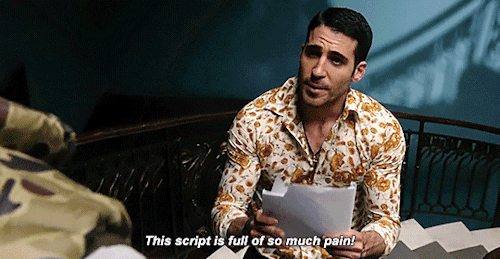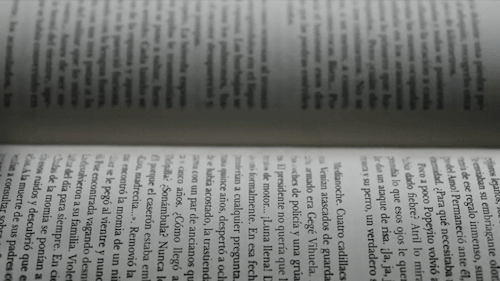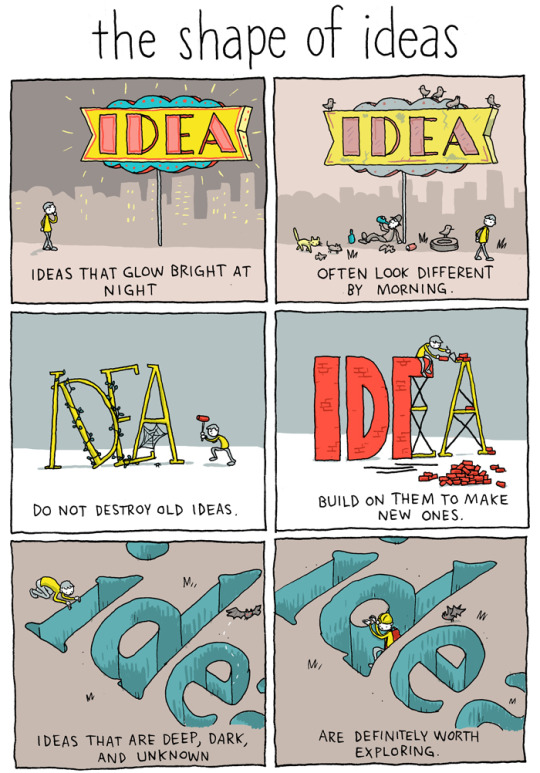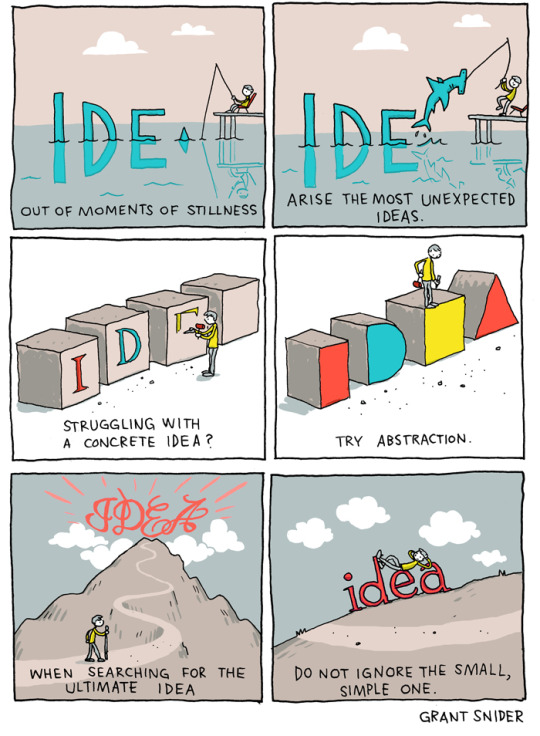Vampire, Zombie, monster. Whatever you call them, they are blood thirsty. That's what you're taught. That's how you live. Until the boy in the cell. Blood Child is the intellectual property of Mattias Serrander. The book will include themes of fantasy, dystopia, and queerness.
Don't wanna be here? Send us removal request.
Text
writing tip #2480:
one of the most important things to keep in mind is how your protagonist reacts to bubblewrap
204 notes
·
View notes
Text
Be cruel to your characters.
Let bad things happen to good people. Let your characters try and fail. And try again. And fail again. Let them be betrayed in the worst possible way. Let them betray others because they have no choice. Force them into situations that make them uncomfortable. Force them to argue or fight or bargain their way out. Drive them to the brink of insanity. Push them over the edge. Take everything away from them. Let them realize what they’ve lost.
Be kind to your characters.
Let faith and perseverance win out. Let love be enough. Let the Sun dry up the rain. Give them friends who will never leave. Let someone save them before the axe falls. Acquit them of false accusations. Give them the strength to stand up again. And again. When they’ve lost hope, give them something to believe in. Remind them there’s good in the world. Remind them there’s good in them, too. Surprise them. Make them laugh until they cry. Teach them that they can’t be broken.
Most importantly: balance.
Even the darkest tragedy has its moments of light; if your reader has no hope that things will get better, if your character doesn’t learn or become stronger for their suffering, the story becomes meaningless pain. Likewise, not only is it unrealistic for a character to go through life never encountering conflict or sadness, it’s boring. Not every conflict has to be life-or-death in order to be meaningful. Give your characters and your plots high points and lows; just make it real for them.
21K notes
·
View notes
Text
Invaluable writing tips (From Blake Snyder’s “Save the Cat”)
I just finished this book on screenwriting and have highlighted some amazing advice for novelists as well:
1. Save the Cat
This refers to a scene at the beginning of yoru manuscript in which the main character does something that makes the reader root for them them i.e. saving a cat.
This doesn’t have to be something altruistic - it can include smarts or humour or naivety - just something that will make the reader want to follow this character through the story.
Without this scene, you’ll probably end up with a boring character. And no matter how amazing your plot, you need a “followable” character to carry it.
2. The Pope in the Pool
This refers to a scene in which necessary exposition is given whilst the audience is distracted by something more entertaining i.e. having the Pope explain important backstory aspects whilst doing laps in the Vatican Pool.
This is the best way to give readers the information they need whilst still keeping them engaged. Something funny/interesting/moving should happen whilst this necessary exposition is provided.
3. Double Mumbo Jumbo
This refers to the mistake many writers make in asking readers to believe in more than one type of magic/miracle. This suspends reality too much and causes the reader to lose faith in the realism/probability of your story.
So, if you already have magical fairies, don’t throw aliens into the mix as well.
ONE magical element is enough.
4. Laying Pipe
Another error often made is writing a story that needs too much set-up. This means that so much backstory must be explored in the first part of the novel that your catalyst only occurs at page 100 or so.
This will cause readers to lose interest long before they’ve reached the inciting incident. If you don’t get the beginning right and move on the exciting stuff as soon as possible, it doesn’t matter how great your ending is, since few readers will get there.
5. Watch out for that Glacier
This is when the danger in your novel takes too long/perhaps the whole book to get to your characters/to threaten them. Therefore, the reader is aware that there is some eventual threat, but the characters aren’t affected by it throughout the story.
It’s a glacier coming for them rather than a missile. And it dampens the tension.
6. The Covenant of the Arc
Every somewhat important character in the novel should change, except for the bad guy. This is what will ultimately distinguish your good guys from your villain: moral change.
So, take a look at the journey of every primary and secondary character in your manuscript and ensure that they grow/experience some for m of change that is brought about by the events in the story.
7. Keep the Press Out
This is the tip I think should be used with the most circumspection. It’s for you to decide whether you want to follow this piece of advice or not.
This tip calls for leaving media coverage/the press out of your story. If some supernatural/extraterrestrial event occurs in a secluded neighbourhood and remains a family secret, it’s much easier for your reader to believe that it could really have happened than if the whole world is supposedly in on it.
Like I said, use with discretion.
These are all Blake Snyder’s tips (not mine) and are explored in greater detail in the book. So, if you would like more information and more great advice, I suggest grabbing a copy.
Reblog if you found this useful. Follow me for similar content.
16K notes
·
View notes
Photo










The BIG question.
My son is an artist and will sometimes have these questions.
So I figured I’d try to make a little sketch to answer it.
It’s VERY simplified.
#pascalcampion
910 notes
·
View notes
Text

Sorry about the radio silence, but I've been making major changes to the book! I think this change will be all for the better and adds some much needed structure to the text :p Keep your ears perched as I try to be more active with the progress again!
34 notes
·
View notes
Note
How is your book going?
Its…. There’s just a few steps left :D but it still feels like there’s this massive hurdle to get over because of the rewrite but at lest I see the end of the tunnel!
17 notes
·
View notes
Text
Blurbing;
How to relay a story with minimal headache*
*Minimal headache is still some headache. You’re trying to summarize something that needs thousands of words to properly convey. It’s not going to be easy.
Blurbs are an absolute necessity for marketing your book, and the sooner you have a good one, the easier it is to get people interested in your work. Unless you’re writing a short story, you’ll never be able to include all the interesting parts of your book into a single blurb. That’s okay. The point of the blurb is to pick out the key focus of the story as a whole, and relay that in the most interesting way possible.
When writing blurbs, it’s good to end up with one short/mini blurb, or logline, which should be a single sentence, and one longer blurb which should be a few paragraphs. (Note that a synopsis for a query letter is quite different from a blurb. There are links at the bottom of the post which will help you with a query-worthy synopsis.)
Tips and tricks:
Know what your story is about. No brainer, right? Keep in mind that this isn’t the same as having a summary or outline. You want to know the focus of your story, the thing that remains when you strip everything else away.
Use a formulaic starting point. A good formula to start with looks something like this: “When [INCITING INCIDENT OCCURS], a [SPECIFIC PROTAGONIST] must [OBJECTIVE], or else [STAKES].” Just remember this isn’t a cheat. You’ll still need to rework the resulting sentence.
Start small and expand, or start large and cut out. Figure out a solid short blurb and then turn every key aspect (the protagonist, the inciting event, the objective, and the stakes) into a sentence or two of it’s own, or write the full blurb first and cut away words until you have a single sentence.
Write many versions. Without any rereading, try speed writing 25 short blurbs and 5 long blurbs. Come back when you’re done and pick out the points you feel worked the best and were most true to your story.
Get feedback. Throw your favorite few blurbs at people you trust who are also part of your target audience. Which ones create the most interested in the story itself?
Good explanations on how to write loglines, blurbs, and synopsis, from non-tumblr websites who’s links shouldn’t die:
On short blurbs (loglines)- | One | Two | Three | Four | On long (back of book) blurbs - | One | Two | Three | Four | On query-worthy synopsis- | One | Two | Three |
Edit from 2/23/18:
Since I just spent some time reading a bunch of sci fi and fantasy blurbs in preparation for writing Pearl’s, I thought I might update this.
There is no right way to write a blurb. Some are a single paragraph, some are a full page. Some have quotes from the book, some directly mention the author, some focus just on the plot or dedicate most of their space to the worldbuilding. It doesn’t matter what your blurb looks like as long as it sounds good and gets people interested in your book!
A nice, simple format I’ve found to work really well for Speculative Fiction looks something like this:
Part one — The world. Give a strong sense of your worldbuilding and the set up for any political, magical, or technological building blocks important to your plot. This can double as a protagonist (or antagonist!) introduction, or you can leave that for the second paragraph, depending on what flows best.
Part two — The inciting event. What happens to get the story rolling? This should be something within your first few chapters, which sets your protagonist on their path. (If it’s not, you may have some structural edits to do for your novel.)
Part three — The hook. Leave the reader questioning what’s to come! Focus on the disaster the plot is heading for, or point out a game changer or upcoming obstacle.
As mentioned above, this is certainly not the only way to write blurbs. Some novels downright can’t follow this exact structure for one reason or another. Most don’t need to. But it’s still a nice, fairly headache-less exercise to try out when working on a blurb, and it might give you something worthwhile once you’re finished.
4K notes
·
View notes
Text
When the writing is almost there
…But you’re not exactly sure how to get it there:

374 notes
·
View notes
Text
The Straight Person’s Guide to Portraying Queer People
Courtesy of your friendly neighborhood queer author, for all the anons who have been sweet enough to ask!
Avoid:
1. Any queer character that exists exclusively to support the development of a straight person.

(Gif source.)
Most commonly, this is exemplified with the Sassy Gay Best Friend. The Sassy Gay Best Friend has no queer friends, inexplicably content to surround himself exclusively with heterosexual, cisgender women and listen to them vent about what pugnacious assholes their boyfriends are.
The Sassy Gay Best Friend exhausts me just by thinking about him. The closest friends of every other queer person I know are composed predominantly of other queer people, myself included, and it’s with other queer people that we tend to best connect. Dealing with large groups of straight people tends to exhaust and upset me, and I cannot imagine willingly deal with half the amount of heterosexual melodrama as the Sassy Gay Best Friend.
2. Needlessly killing off queer characters.

(Gif source.)
Especially to forward the development of straight people, which it usually is.
The Bury Your Gays trope is thought to have originated with the strict censorship laws, which dictated that queer characters and relationships could only be portrayed if they atoned for their sins and “turned straight” by the end of the story, or – drumroll please – died. It is not, as many authors believe, a realistic portrayal of what life has always been like for queer people, because there have been innumerable examples of us living and loving happily throughout history.
In other words, the only thing burying your gays accomplishes is contributing to an ugly cycle. So if you have the option not to kill off queer characters, don’t.
3. Exclusively subtextual queer relationships.

(Gif source.)
This phenomenon, commonly known as queerbaiting, originated with clever creators finding loopholes in the aforementioned censorship laws of the nineteenth and twentieth century, by weaving romantic and/or erotic relationships between same gender-characters in between the lines.
One of my favorite examples of this phenomenon is 1950s film Some Like It Hot, a surprisingly tender and thoughtful examination of gender identity, femininity, and sexual orientation. Concisely put, the two male leads are circumstantially compelled to disguise themselves as women and travel with an all-female band, during which one of the men captures the affection of a (male) millionaire, who asks for his hand in marriage. He says yes, and the film ends with this exchange:





(Gif source.)
Okay, this isn’t exactly subtext, which is why the film was produced without the approval of the Motion Picture Production Code. But you get the idea: this is as blatant as queer identities could be in 1950s America.
The key difference? It is no longer the 1950s, and what was revolutionary for the time period is not revolutionary now. Don’t repeat JK Rowling’s fallacy and expect to squeak by with subtextual or offscreen representation.
Include:
1. Happy, healthy queer relationships.

(Gif source.)
Far too often, queer rep in the media showcases dysfunctional relationships, usually short-term, sex-based, and/or with a reasonably severe power imbalance (looking at you, Call Me By Your Name.) This is worrisome, because it conveys an unhealthy message to queer youth about what normality looks like, and perpetrates a pervasive stereotype that queer people are more likely to be deviant and unhealthy than their straight peers.
In reality, the inverse is true: queer couples show statistically higher rates of happiness and contentment than straight couples do.
So allow your work to reflect this! Portray loving, supportive, and affectionate queer couples who encourage one another’s success and quality of life. Think Jamie and Amanita from Sense8, or Holt and Kevin from Brooklyn 99.
2. Wholesome queer love.

(Gif source.)
A reported root of homophobia is the fact that straight people, ironically, can’t stop thinking about kinky gay sex.
I’m not kidding: research shows that straight people are so thoroughly conditioned to associate gay people with stereotypes of promiscuity, sexually transmitted diseases, and paraphilia that they think of non-straight sexuality is inherently unclean. This is always what makes the “lol i’m sinning” culture straight girls build around queer couples and ships so harmful.
To countermand this, try to portray queer love as sweet, pure, and wholesome whenever possible. Depict puppy love and crushes and adorable dates between same gender couples. Expunge the idea that queer sexuality is inherently profane.
This doesn’t mean the couples can’t be interesting or complex, mind you – books such as Aristotle and Dante Discover the Secrets of the Universe are excellent examples of tenderly portrayed first love, while painting intriguing portraits of complex feelings and characters.
3. Casual queer representation.

(Gif source.)
If you’re a straight person who hasn’t interacted much with the queer community, I’m going to personally recommend that you stay away from stereotypes. Promiscuous bisexuals, flamboyant gay men, butch lesbians, et cetera.
These people exist and deserve to be depicted – I’ve even depicted two out of the aforementioned three examples in me my most recent novel – but I’m inclined that it takes a member of the queer community to portray them with authenticity and respect.
So where do you start? Casual representation, that’s where.
Give me trans men relaxing in their binders at the end of the day, casual mention of same-gender crushes or past partners, a same-gender partner that the hero is fighting to get home to. Sometimes the best form of representation is to depict queer people as simply existing and living their lives.
Disclaimer:
These are all based off of my personal pet-peeves and opinions as a queer woman, and you don’t have to follow any of them. Though I firmly believe we need better representation from up-and-coming authors, I’m profusely anti-censorship, and I believe everyone deserves to write their story the way they want to.
I hope this helps, and happy writing! <3
#a good guide for queer people as well#when writing about an idetity that is not your own#writing#tips#writing tips
6K notes
·
View notes
Text
10 outline techniques for writers
With this post I listed 10 outline techniques to help writes move their story from a basic idea to a complete set of arcs, plots, sequences and/or scenes. Or to simply expand whatever you have in hands right now.
If you have a vague story idea or a detailed one, this post is for you to both discover and organize. A few technique will work perfectly. A few won’t. Your mission is to find the one that works best for you. That said, I advice you to try out as many techniques as possible.
So, are you ready? Open your notebook, or your digital document, and let’s start.

1. Snowflake method: Start with a one-sentence description of the novel. Then, develop this simple phrase into a paragraph. Your next step is to write a one-page summary based on the paragraph, you can write about characters, motivations, goals, plots, options, whatever you feel like. From this point on, you can either start your book or expand the one-page summary into four pages. And, at last, four pages into a brief description of known sequences of scenes. Your goal is to make the story more and more complex as you add information, much like a forming snowflake.

2. Chapter by chapter: List ten to twenty chapters, give each chapter a tittle and a brief description of what should happen. Then, break each chapter into three to five basic sequences of scenes. Give each sequence a title, a brief description and a short list of possibilities (possibilities of dialogues, scenarios, outcomes, moods, feelings… just play around with possibilities). From this point on, you can either create the scenes of sequences with a one-sentence description for each or jump straight to writing. Your goal is to shift from the big picture to a detail-oriented point of view.
3. Script: This might sound crazy, but, with this technique, you will write the screenplay of your story as if it’s a movie. No strings attached to creative writing, just plain actions and dialogues with basic information. Writing a script will take time, maybe months, but it will also enlighten your project like no other technique. Your goal is to create a cinematic view of your story. How to write a script here.

4. Free writing: No rules, no format, no step, just grab a pen or prepare your fingers to write down whatever idea that comes up. Think of possibilities, characters, places, quests, journeys, evolutions, symbolisms, fears, good moments, bad moments, clothing, appearances. Complete five to ten pages. Or even more. The more you write, the more you will unravel. You can even doodle, or paste images. Your mission is to explore freely.
5. Tag: This technique is ideal if you have just a vague idea of the story. Start by listing ten to fifteen tags related to the story. Under each tag, create possible plots. And, under each plot, create possible scenes. Grab a red felt pen and circle plots and scenes that sparkle your interest.

6. Eight-point arc: With this technique you will divide your story into eight stages. They are Stasis, Trigger, Quest, Surprise, Critical Choice, Climax, Reversal and Resolution. The Stasis is the every-day-life of your main character. Trigger is an event that will change the every-day-life of your character (for better or for worse). Quest is a period of your main characters trying to find a new balance, a new every-day-life (because we all love a good routine). Surprise will take your character away from their new found every-day-life. Critical Choice is a point of no return, a dilemma, your character will have to make the hardest decision out of two outcomes, both equally important. Climax is the critical choice put to practice. Reversal is the consequence of the climax, or how the characters evolved. Resolution is the return to a new (or old) every-day-life, a (maybe everlasting) balance.
7. Reverse: Write down a description of how your story ends, what happens to your characters and to those around them. Make it as detailed as possible. Then, move up to the climax, write a short scenario for the highest point of your story. From there, build all the way back to the beginning.

8. Zigzag: Draw a zigzag with as many up and downs as you want. Every up represents your main character moving closer to their goal. Every down represents your main character moving further from their goal. Fill in your zigzag with sequences that will take your character closer and farther from the goal.
9. Listing: The focus of this technique is exploring new ideas when your story feels empty, short or stagnated. You’ll, basically make lists. Make a long list of plot ideas. Make another list of places and settings. Make a list of elements. And a list of possible characters. Maybe a list of book titles. Or a list of interesting scenes. A list of bad things that could happen inside this universe. A list of good things. A list of symbolism. A list of visual inspiration. A list of absurd ideas you’ll probably never use. Then, gather all this material and circle the good items. Try to organize them into a timeline.

10. Character-driven: Create a character. Don’t worry about anything else. Just think of a character, their appearance and style. Give them a name. Give them a basic personality. Give them a backstory. Develop their personality based on the backstory. Now, give this character a story that mirrors their backstory (maybe a way to overcome the past, or to grow, or to revenge, or to restore). Based on your character’s personality, come up with a few scenes to drive their story from beginning to end. Now, do the same thing for the antagonist and secondary characters.
So, when is it time to stop outlining and start writing?
This is your call. Some writers need as many details as they can get, some need just an basic plot to use as a North. Just remember, an outline is not a strict format, you can and you will improvise along the way. The most important is being comfortable with your story, exploring new ideas, expanding old concepts and, maybe, changing your mind many times. There’s no right or wrong, just follow your intuition.
55K notes
·
View notes
Text
Tragic past doesn’t mean = actions justified
Tragic past means = explanation behind acts.
124K notes
·
View notes
Conversation
me: how many words have i written
is it a million
is it TWO million
word counter: 409 words
me: LIES
430K notes
·
View notes
Photo

3rd time editing! Still a lot to do, but I can see the horizon ☆
It’s been three years since I started this project and so much has happened during that time. Not only am I halfway done with Blood Child, I have 7 other book projects, a new job at bookshop, huge plans with a friend that will kickstart after this summer, finally getting married after 4 yeats of engagement. There’s a lot I would want to do differently but I’m happy, safe and like where my life is going :D Blood child got me writing and reading again after an almost 6 year break from it. This is a pure love project and I cant wait for people to read it!
Are you working on any writing projects? Tell me how it goes :D
34 notes
·
View notes
Note
So I'm an aspiring writer, but lately when I try to write I always get distracted. Any tips for this?
I am the master of getting distracted 😂 i have several tricks that I use depending on what kind of distracted I am.
• If I’m tired-distracted I usually put on some inspiring music, it can be for a specific character I want to learn more about or for a scene, and scribble down ideas in my phone or a piece of paper. It makes my creative juices flowing and creates new scenes I can use for the book.
• If I’m “I have youtube to watch”-distracted (this goes for tumblr and twitter also) I go for a quick walk or I get away from the house to write. Even if you have internet at a cafe or at school or wherever you go I usually feel too awkward to watch youtube with strangers around me so I write instead. It’s also a great source of inspiration to be around strangers :)
• If I’m stuck, I usually do something you should never do according to almost every writing tip. I start plotting a new story, usually simpler than the one I’m originally writing. This isn’t something I recomend though, since I do this because I need change to keep myself intrested in every story I start so I change between them.
• If I’m busy-distracted with work or school there’s not much to do. School should always go first and if you’re working you can scribble down ideas when they strike.
• If I’m “no inspiration”-distracted I set up a cozy corner in the house (right now i have the bedroom that is a magical forrest 😍). It’s a great way to move and feel a little bit accomplished instead of just sitting still and getting frustrated.
Other than that it is a matter of prioritizing. Being a writer is not just writing when you feel like it or have the inspiration, and sometimes you have to take drastic measures to make it happen. It’s work, and even if you dont feel like it you have to make yourself sit down, shut off the internet and turn off the phone. Even forcing it out can actually help getting the writing going.
I hope this helps a little! Good luck with your writing 💖📚
29 notes
·
View notes
Text
I have this habit (one of the reasons I like writing alone). When I get stuck writing a scene I get up and silently act it out with a constant frown on my face. I bet it looks really weird but it really works for me! Do you have any writing habits you find strange? Share them with me so I dont feel like a total dork all by myself!
4 notes
·
View notes
Text
Decided today to make a different document to re-write the ending in Blood Child. That way I dont have to curse myself for messing it up if I do! :D Hi everyone! I've had a lot to do these past months; new job, education, life. But now everything is starting to calm down a bit and I finally have time to write again! And the first thing I do is change the ending. I've hadan ide for a new ending for a while and I think to really know if it will work I have to write it out. It will be exiting to know what ending my closest will like the most! I'm also starting my second edit so my dad is printing it at his work because it's 200 pages (with editing space). I'm hoping it wont be as much to change this time but I'm sure I'll find something :P
2 notes
·
View notes

